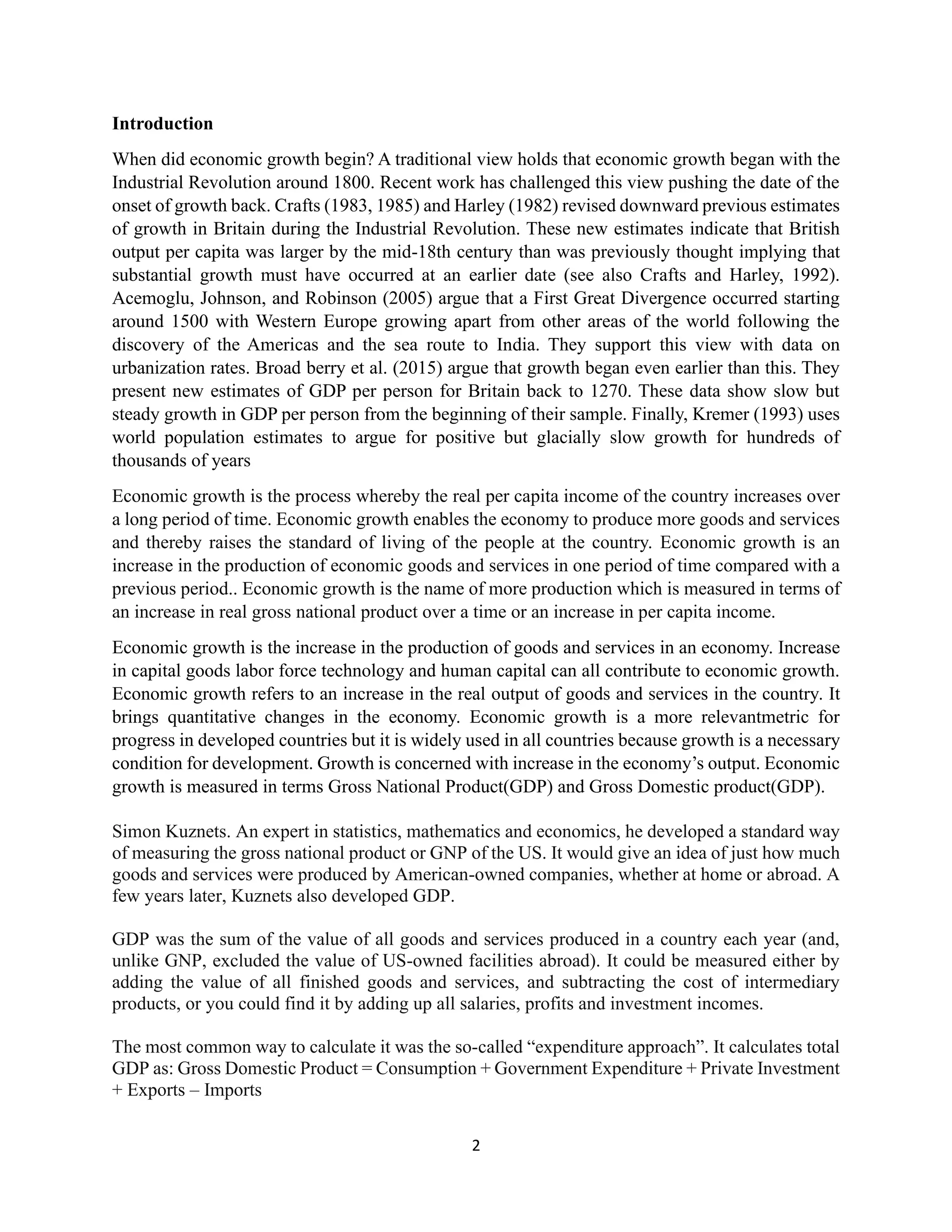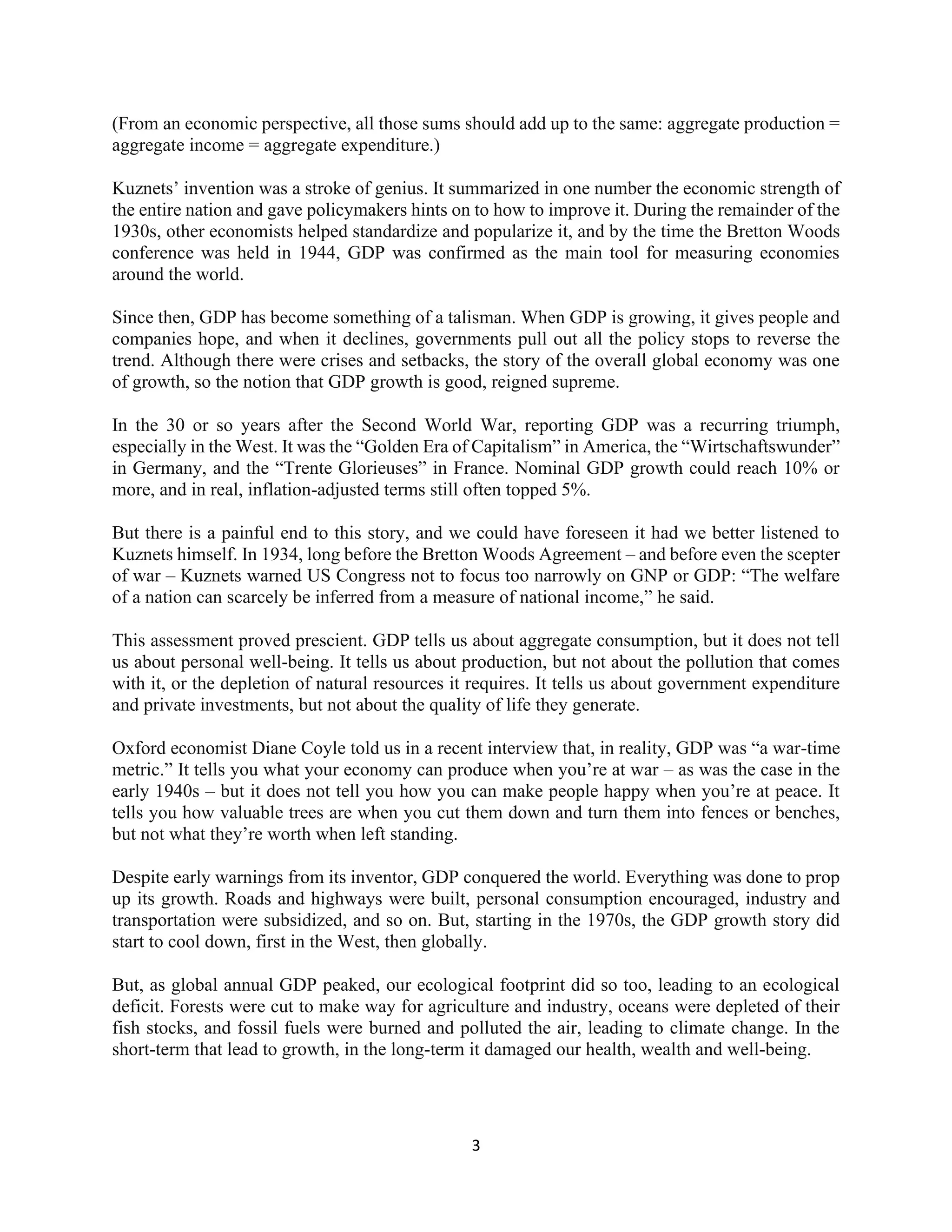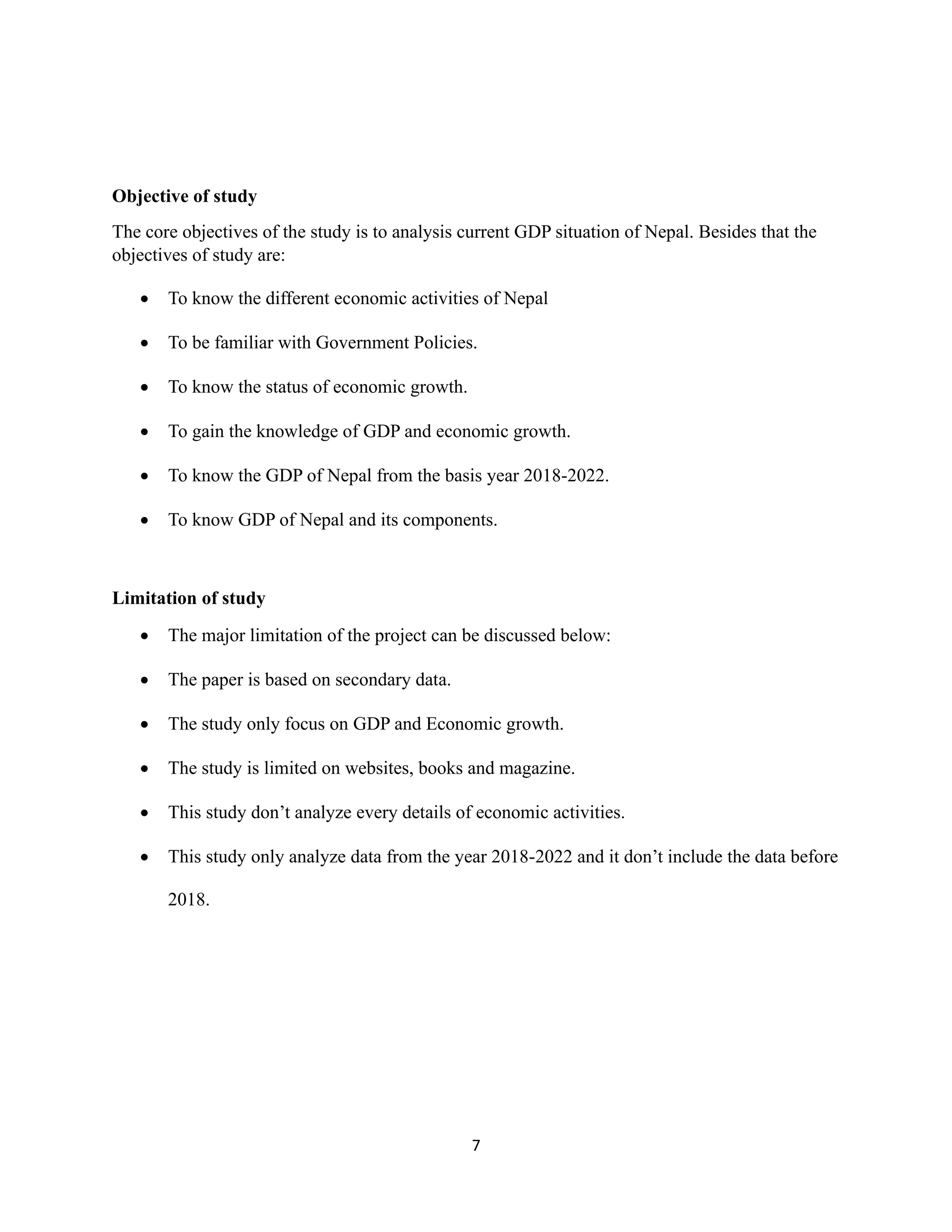This paper analyzes Nepal's GDP from 2018 to 2022, highlighting its economic growth and comparing it to larger nations like China and India. Despite improvements, Nepal's GDP was $40.15 billion in 2022, and the majority of its population relies on agriculture, demonstrating a backward economic position relative to its neighbors. The study emphasizes the need for better public spending and foreign investment to enhance economic activities in the country.













